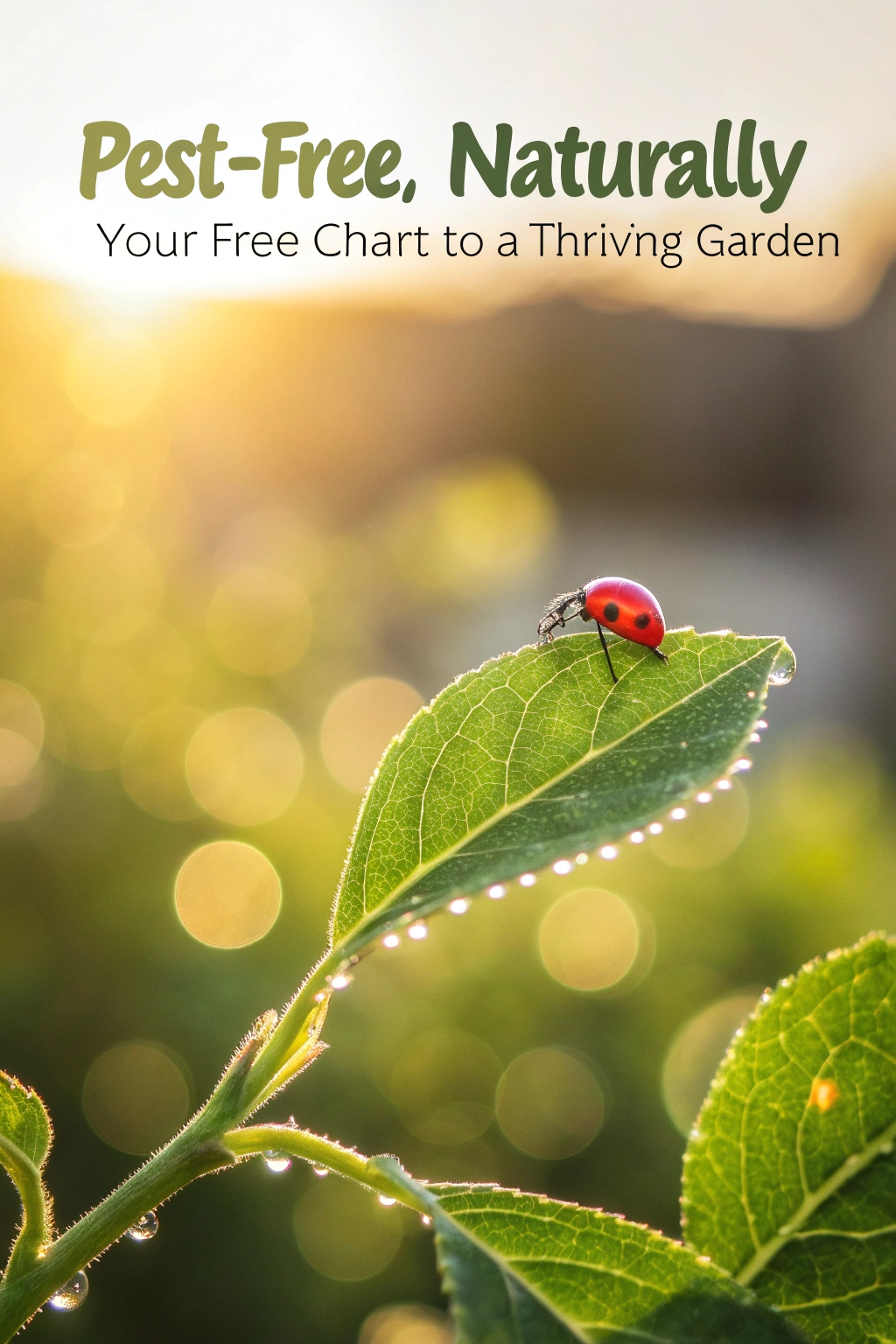Do you want a beautiful garden even in a dry place? You can have one if you choose plants that don’t need much water and use special ways to save water. This will make your garden look great and help the environment too.
Try using rocks and special pipes that give water straight to the roots of plants. This is good for the planet and makes your garden look amazing.
You can make a super cool garden with these 17 easy ideas and have a wonderful outdoor space.
Choose Drought-Resistant Plants
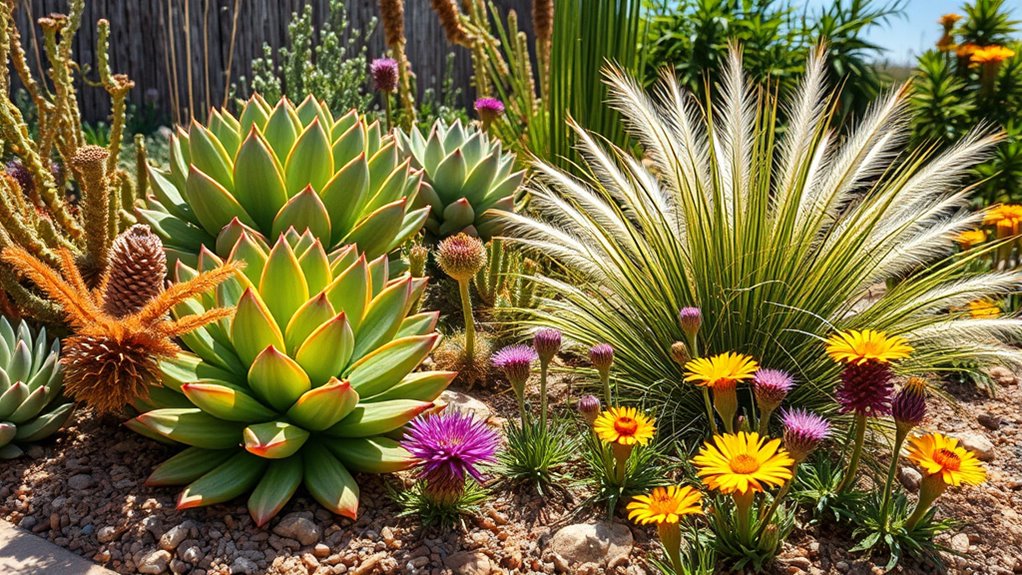
Choosing drought-resistant plants is essential for creating a thriving garden in dry climates. These resilient species, such as succulents, native perennials, and ornamental grasses, are adapted to conserve water and withstand heat. They require minimal maintenance and often provide beautiful blooms and textures throughout the season. Selecting a variety of colors and forms can enhance visual interest while ensuring that your garden remains sustainable and low-water, contributing to an eco-friendly landscape.
2. Implement Mulching Techniques
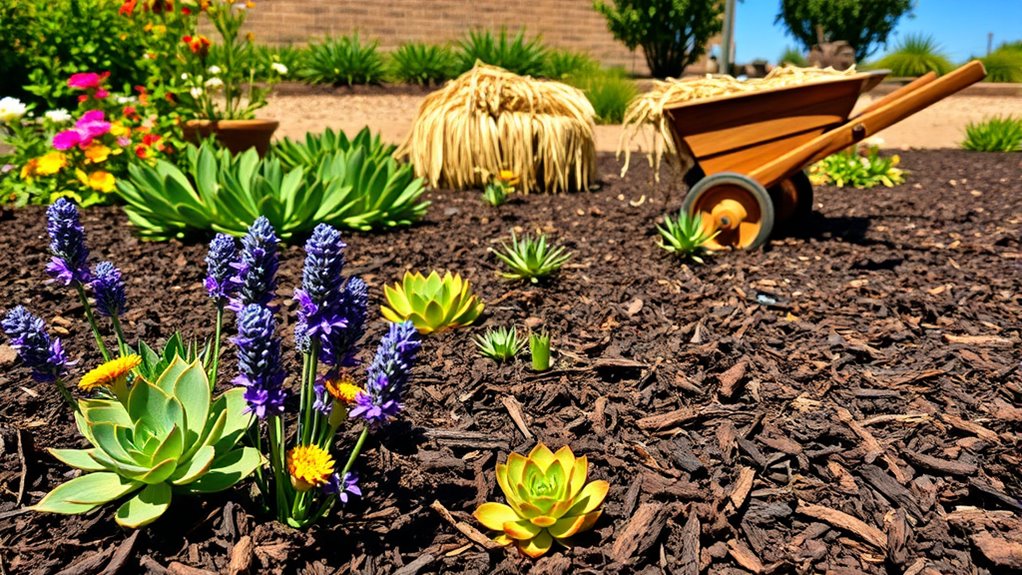
Implementing mulching techniques is essential for a thriving garden in dry climates. Mulch, made from organic materials like bark, straw, or grass clippings, helps retain soil moisture, reduce temperature fluctuations, and suppress weeds. By applying a layer of mulch around plants, you not only keep the soil hydrated but also enhance the aesthetic appeal of your garden. Additionally, as the mulch breaks down, it enriches the soil, promoting healthy plant growth in arid conditions.
3. Create a Rock Garden
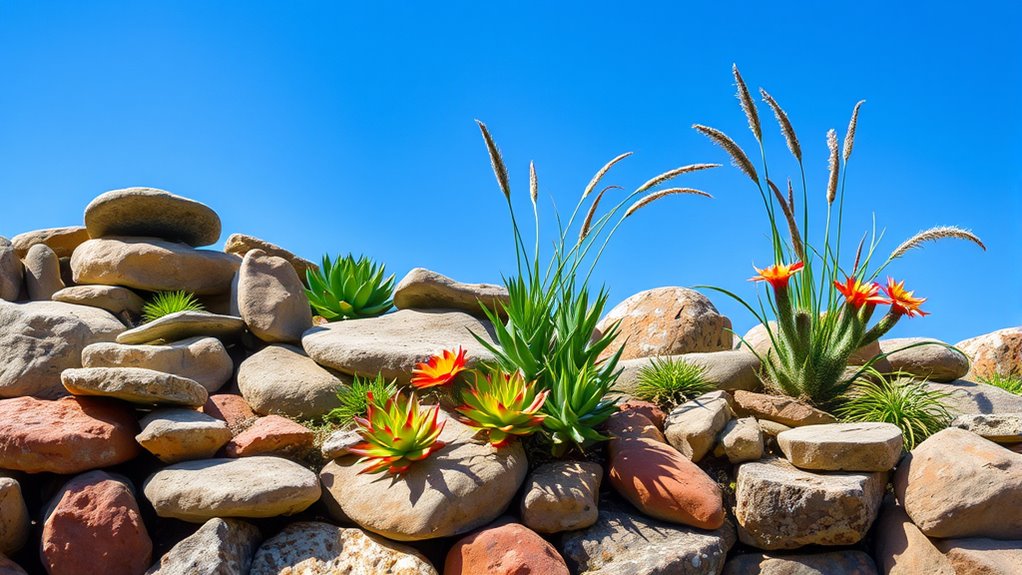
Creating a rock garden is an excellent way to enhance your outdoor space in a dry climate. This type of garden utilizes various sizes and shapes of stones to create a natural and visually appealing landscape. Incorporate drought-resistant plants like succulents, cacti, and native grasses to thrive in arid conditions. The rocks not only provide structure but also retain heat and moisture, creating a microenvironment that benefits the selected plants. Embrace creativity by layering stones and arranging plants for a stunning, low-maintenance garden.
4. Use Drip Irrigation Systems
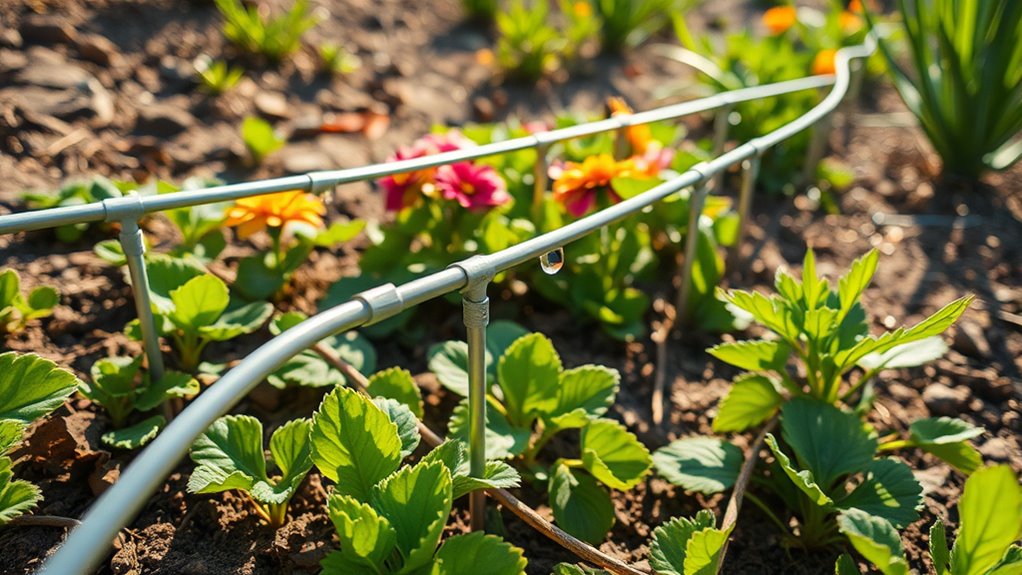
Drip irrigation systems are an efficient way to minimize water waste while providing essential moisture to plants in dry climates. Unlike traditional sprinkler systems, drip irrigation delivers water directly to the roots of plants through a network of tubing and emitters. This targeted approach not only conserves water but also reduces evaporation and runoff. By utilizing drip irrigation, gardeners can maintain healthy, vibrant gardens even in arid conditions, ensuring that every drop counts toward successful plant growth.
5. Incorporate Native Plants
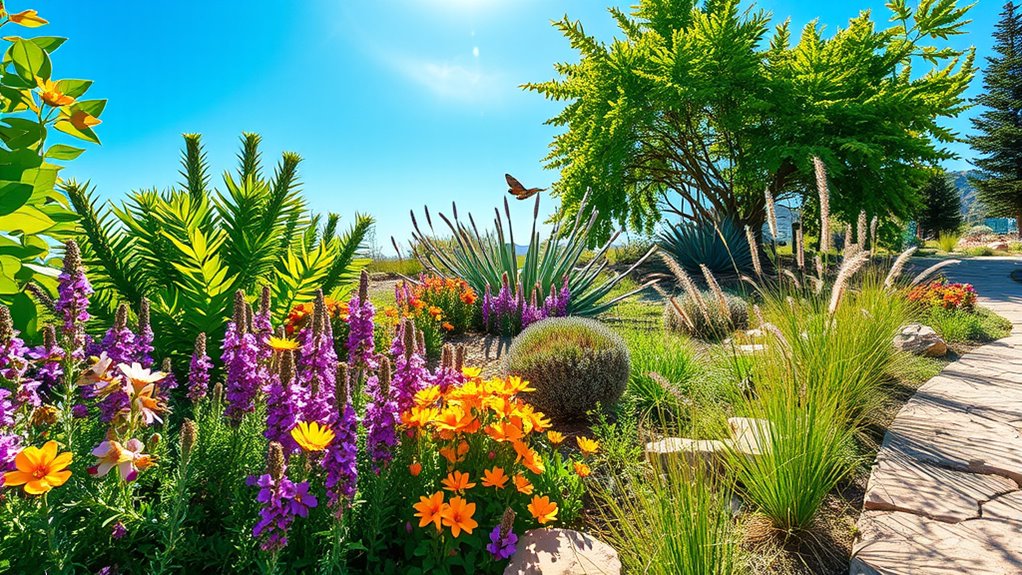
Incorporating native plants into your garden is a fantastic way to thrive in dry climates. These plants are naturally adapted to local weather conditions, requiring less water and maintenance compared to non-native species. They support local wildlife, such as pollinators, by providing food and habitat. Additionally, native plants come in a variety of colors and textures, allowing you to create a vibrant and sustainable garden that flourishes with minimal effort.
6. Install Rainwater Harvesting Systems
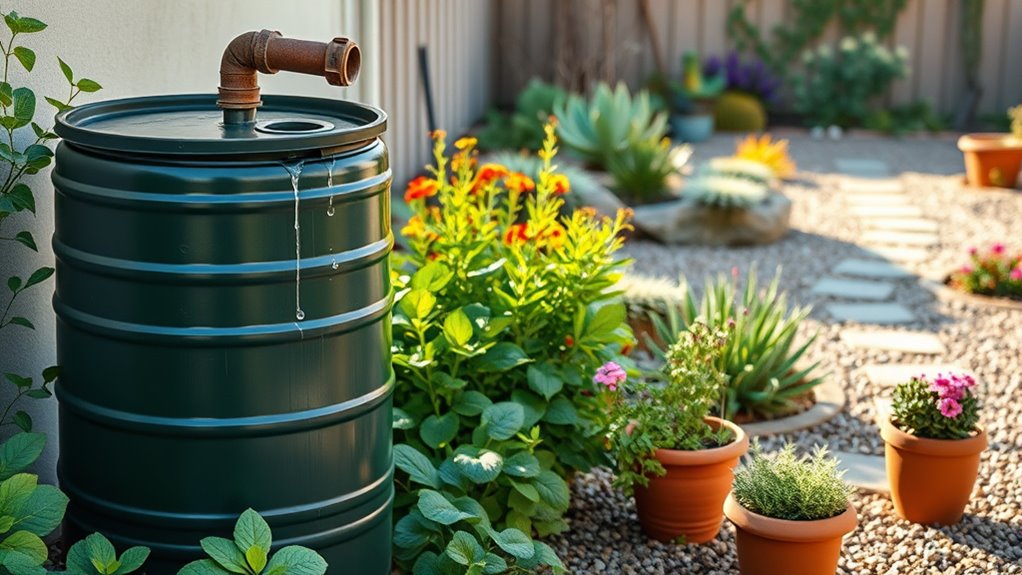
Installing rainwater harvesting systems is a smart and sustainable way to conserve water in dry climates. These systems collect and store rainwater from rooftops, which can then be used for irrigation, gardening, or even household needs. By utilizing rain barrels or larger cisterns, gardeners can markedly reduce their dependence on municipal water sources. Additionally, integrating this eco-friendly practice into your garden design not only enhances resource efficiency but also promotes biodiversity and healthy plant growth.
7. Design a Xeriscape Garden
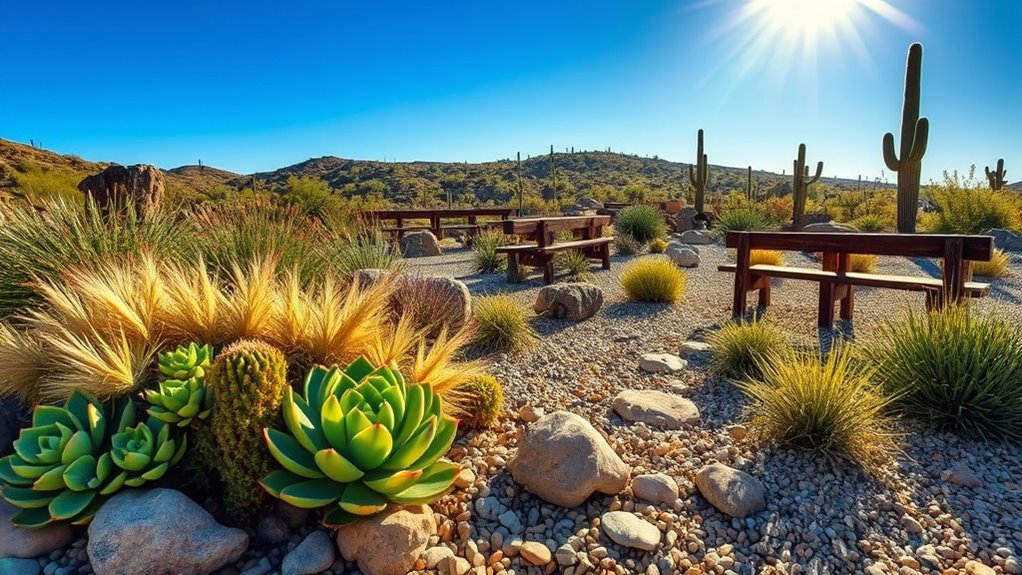
Designing a xeriscape garden involves creating a water-efficient landscape that thrives in dry climates. Start by selecting drought-resistant plants native to your region, such as succulents, ornamental grasses, and hardy perennials. Incorporate mulch to retain soil moisture and reduce weeds. Use rocks, gravel, or decorative stones instead of traditional lawns to minimize water usage. Arrange plants in clusters for visual appeal and efficient irrigation, ensuring your xeriscape is both beautiful and sustainable.
8. Utilize Container Gardens
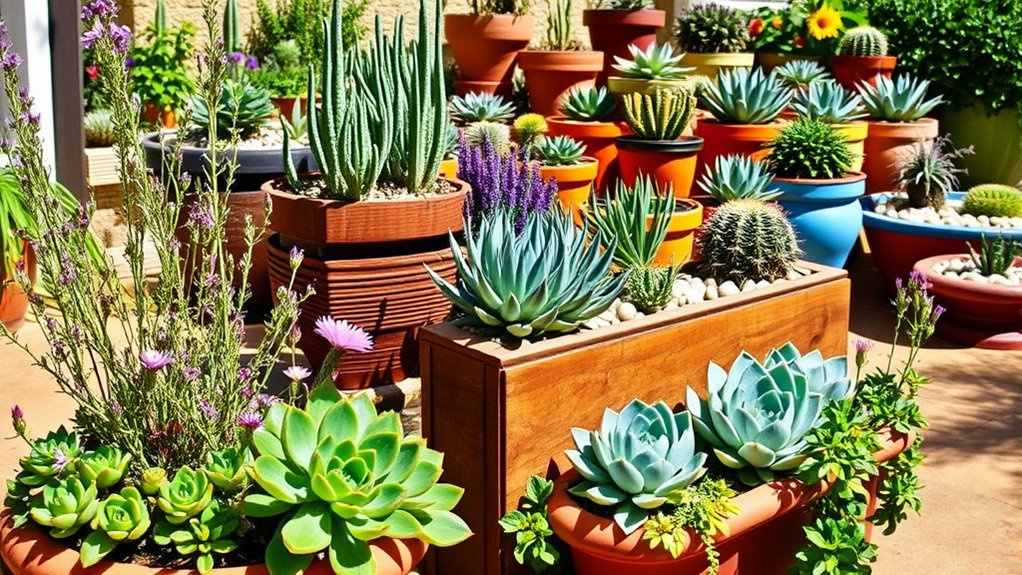
Container gardens are an excellent solution for dry climates, allowing for flexibility and efficient water use. Choose drought-tolerant plants like succulents, herbs, and native flowers that thrive in limited moisture. Utilizing various sized pots can add visual interest, while placing them strategically around your outdoor space can create inviting focal points. Guarantee containers have good drainage, and consider using self-watering options to keep plants hydrated during hot spells, maximizing both beauty and sustainability in your garden.
9. Experiment With Vertical Gardening
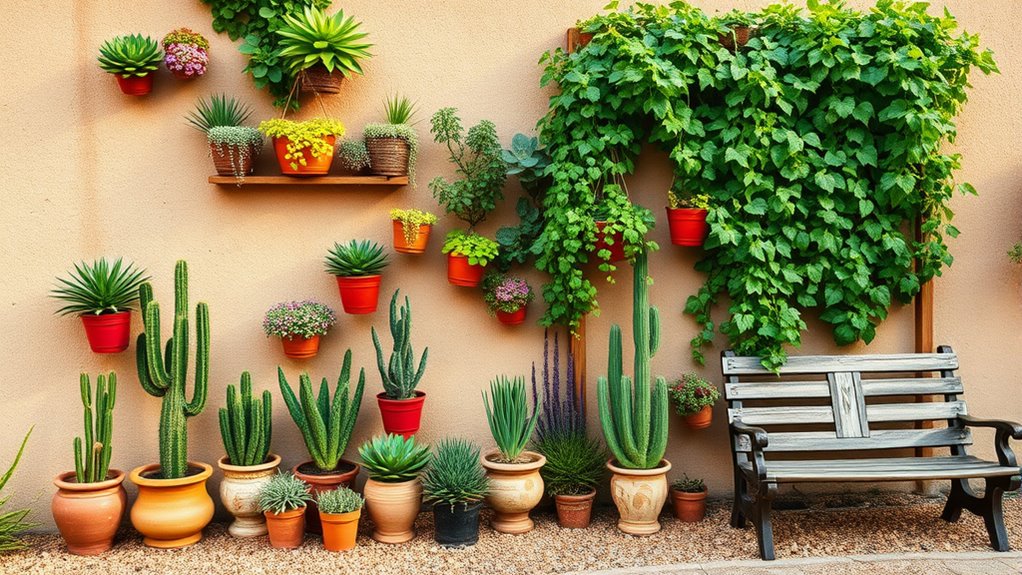
Vertical gardening is a brilliant solution for dry climates, maximizing space while minimizing water usage. By utilizing walls, trellises, or hanging planters, you can create a lush, green oasis without occupying ground space. Opt for drought-resistant plants like succulents, cacti, or herbs that thrive in arid conditions. This technique not only enhances your garden’s aesthetic appeal but also encourages better air circulation and reduces soil erosion, making it an ideal choice for water-conscious gardeners.
10. Plant Succulents and Cacti
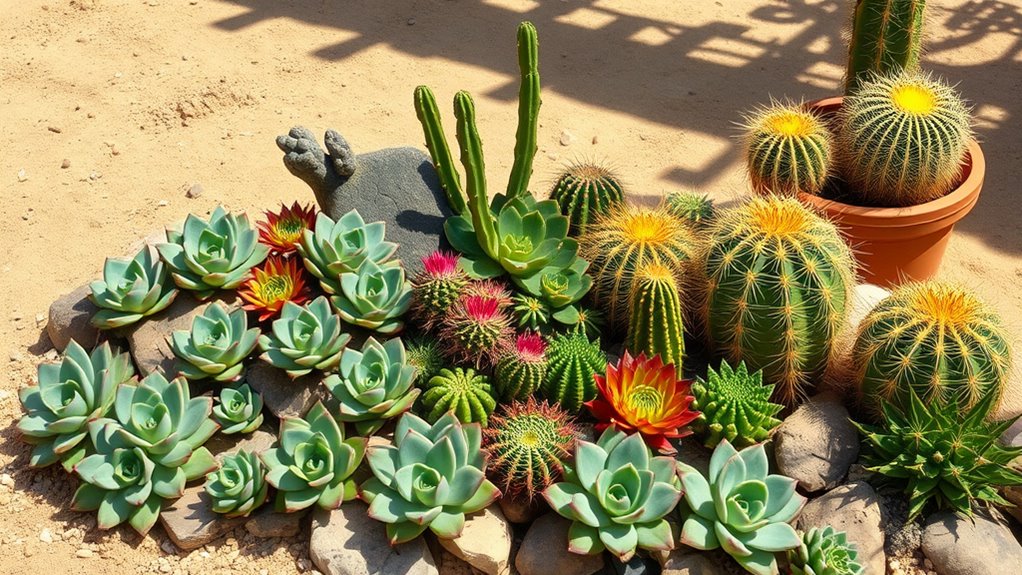
Planting succulents and cacti is an ideal choice for gardens in dry climates, as these resilient plants are adapted to thrive in arid conditions. Succulents store water in their leaves, while cacti have specialized structures to minimize moisture loss. With a variety of shapes, colors, and sizes, they can create visually stunning arrangements. Incorporating these drought-tolerant plants not only conserves water but also adds unique textures and vibrant colors to your garden landscape.
11. Create Shade With Pergolas and Trellises

Pergolas and trellises are excellent additions to gardens in dry climates, providing much-needed shade while adding architectural beauty. These structures can be adorned with climbing plants, like vines and flowering creepers, which not only create a cool refuge but also enhance the aesthetic appeal of your garden. By strategically placing pergolas and trellises, you can create sheltered areas that protect delicate plants from the harsh sun and create inviting outdoor spaces for relaxation and gatherings.
12. Explore Gravel Landscaping
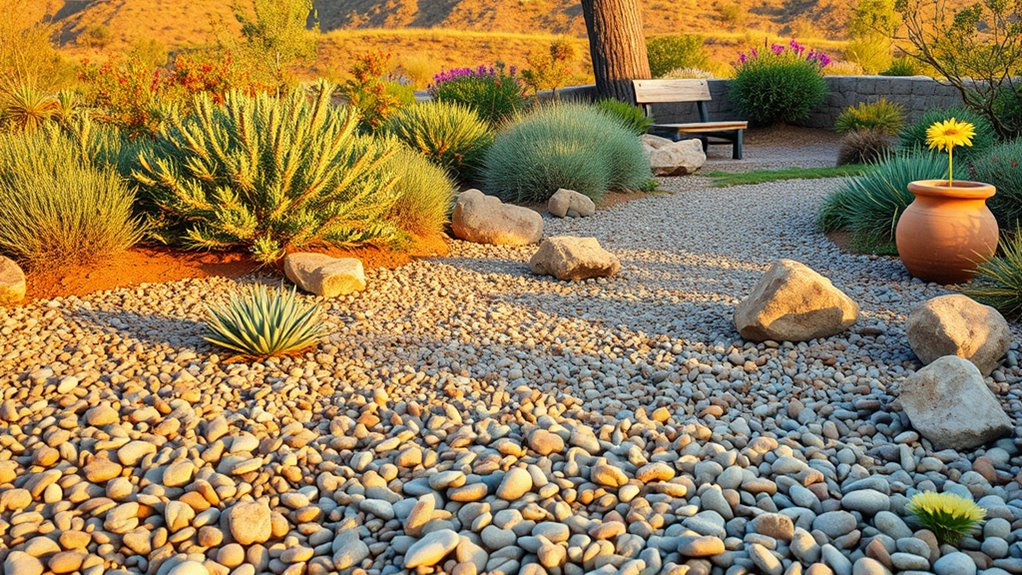
Gravel landscaping is an excellent choice for dry climates, offering both aesthetic appeal and practical benefits. This low-maintenance option reduces water usage while creating beautiful pathways, decorative borders, and versatile garden beds. By selecting various colors and sizes of gravel, you can enhance your garden’s visual interest. Additionally, gravel allows for efficient drainage, preventing erosion and optimizing soil health. Incorporating drought-resistant plants among the stones adds a vibrant touch that thrives even in arid conditions.
13. Add a Water Feature
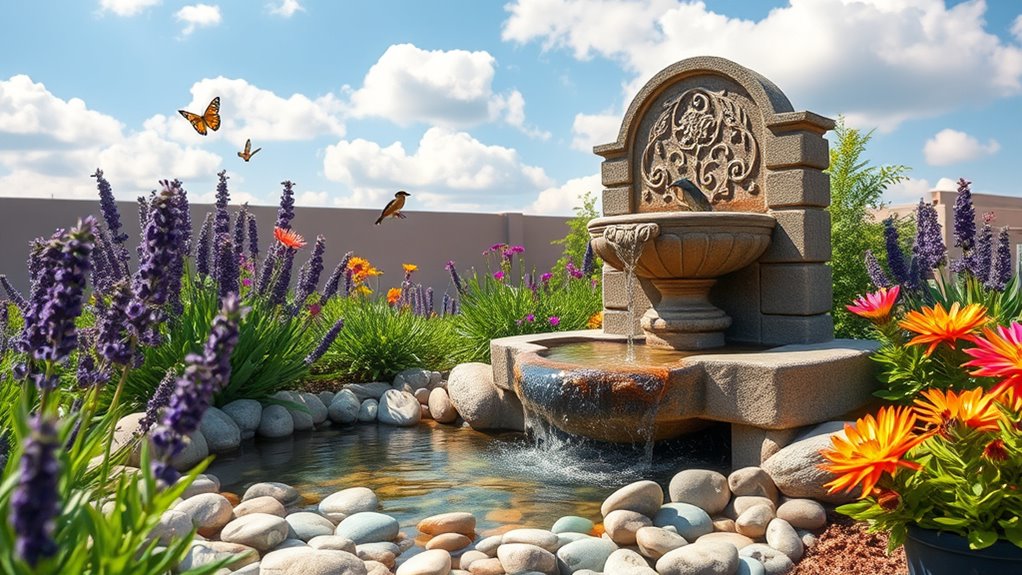
In a dry climate, adding a water feature can greatly enhance your garden’s tranquility and aesthetic appeal. Consider incorporating a decorative fountain, pond, or a simple birdbath. These features not only provide a soothing ambiance with the gentle sound of flowing water but can also attract wildlife, such as birds, butterflies, and beneficial insects. Additionally, using recirculating systems can minimize water usage, making it an eco-friendly choice for your garden oasis.
14. Use Ground Covers to Retain Moisture
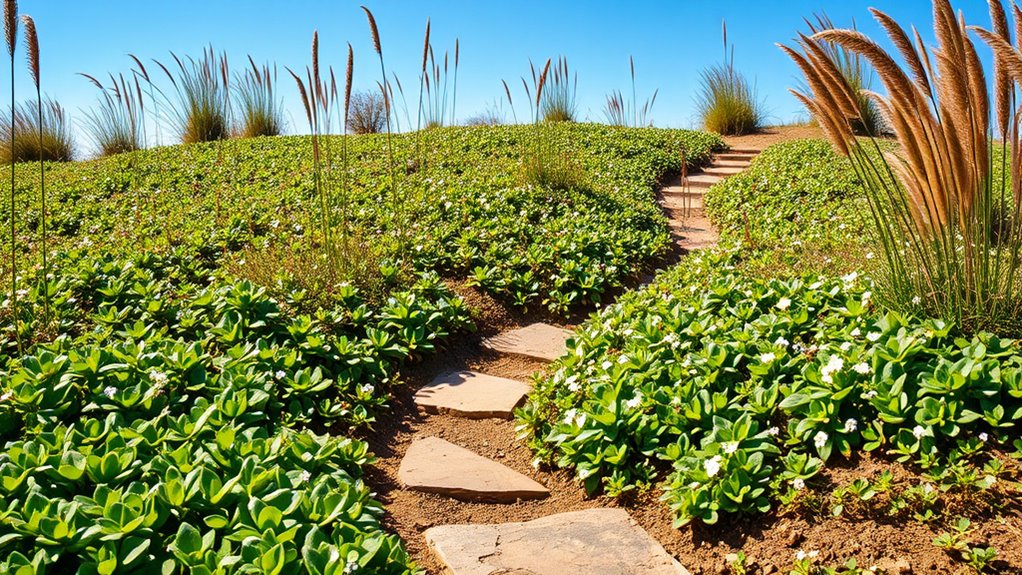
Ground covers are an excellent addition to gardens in dry climates as they help retain moisture in the soil while adding a lush, green aesthetic. Plants like sedum, creeping thyme, and clover create a dense mat that reduces evaporation and keeps the soil cooler. By covering bare ground, they also prevent weed growth and promote healthy soil by enhancing its organic content. Utilizing these hardy plants not only conserves water but also enhances the beauty and sustainability of your garden.
15. Select Heat-Resistant Varieties
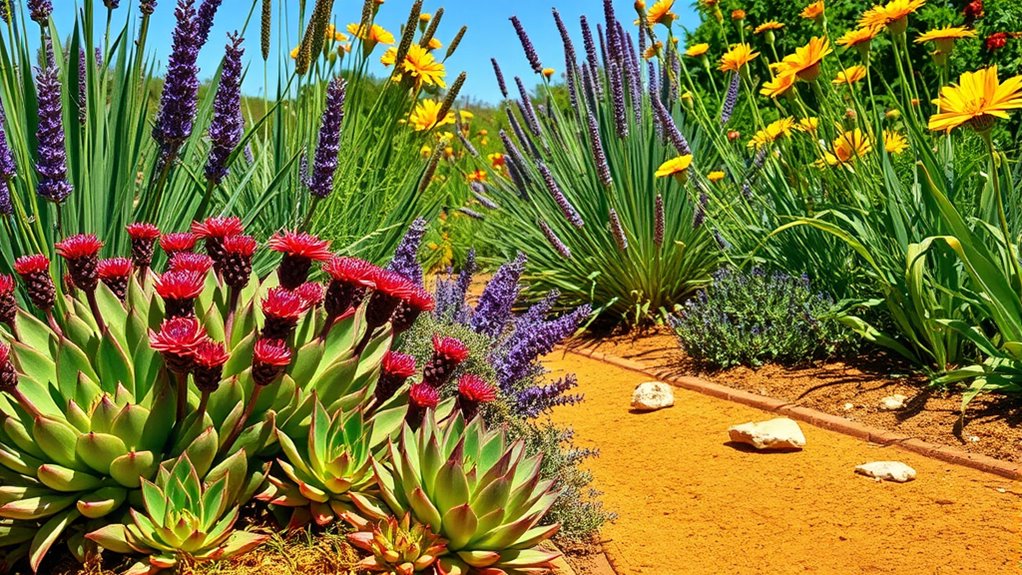
When gardening in a dry climate, selecting heat-resistant varieties is essential for a successful and sustainable garden. Opt for plants like succulents, drought-tolerant perennials, and native species that are adapted to thrive in high temperatures and low water conditions. These varieties not only survive the heat but also require less maintenance and water, making them ideal for conserving resources while enhancing the beauty of your landscape. Embrace biodiversity by mixing various heat-resistant plants for a vibrant and resilient garden.
16. Develop a Pollinator Garden
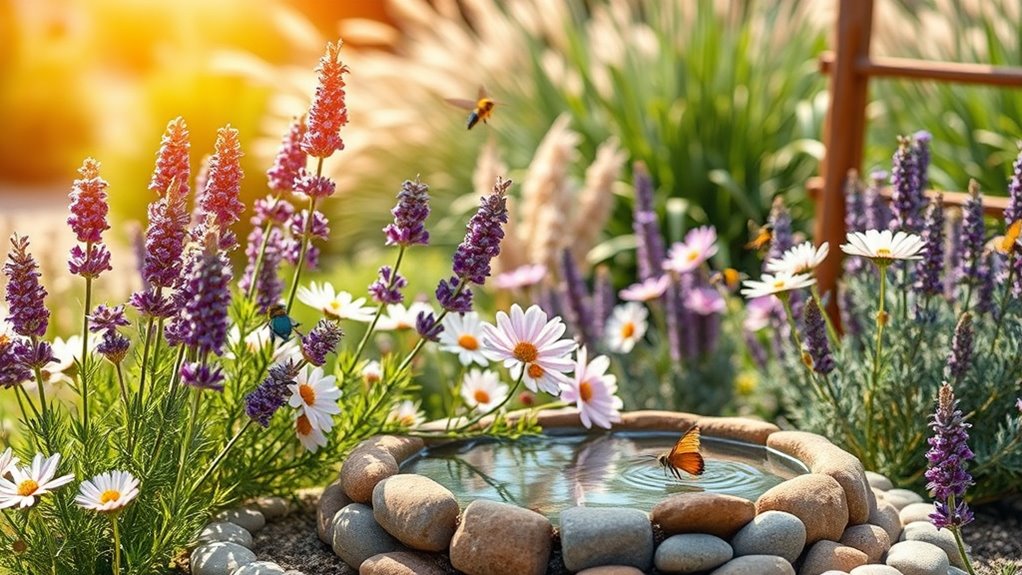
Creating a pollinator garden in a dry climate can greatly enhance local biodiversity and support essential pollinators like bees, butterflies, and hummingbirds. Choose drought-tolerant flowers such as lavender, sage, and cosmos, which provide both sustenance and beauty. Incorporate native plants that thrive in your area’s climate, ensuring they bloom at different times to support pollinators throughout the season. Additionally, provide sheltered spaces and shallow water sources to create a welcoming habitat.
17. Create a Wildlife-Friendly Habitat
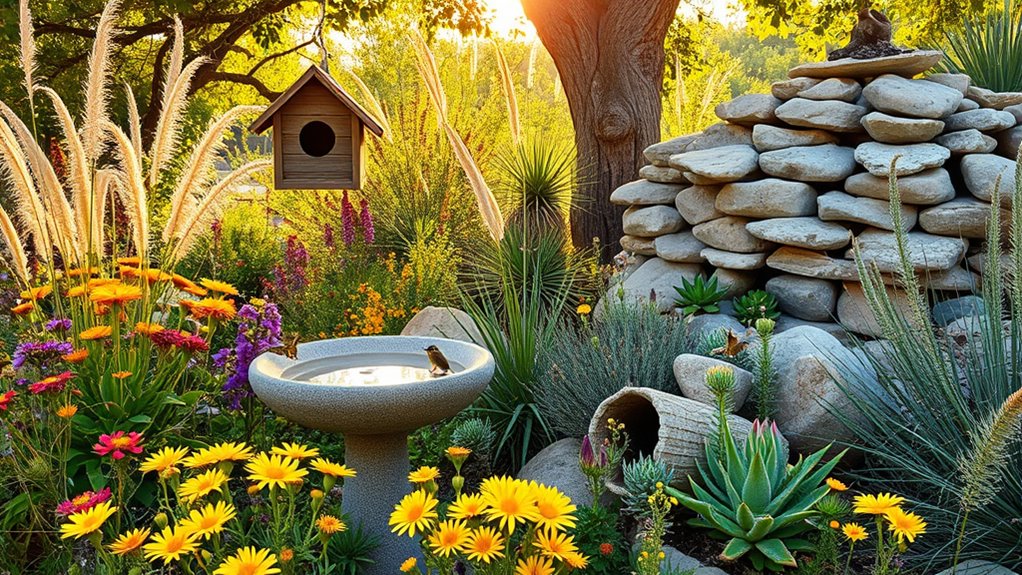
Creating a wildlife-friendly habitat in a dry climate involves incorporating native plants that provide food and shelter for local wildlife. Choose drought-tolerant species such as succulents, wildflowers, and grasses that attract pollinators like bees and butterflies. Adding elements like birdbaths, nesting boxes, and rock piles can further encourage animals to visit your garden. By fostering biodiversity, you not only support local wildlife but also enhance the ecological balance in your outdoor space.
Conclusion
By embracing these creative garden ideas, you can transform your dry climate landscape into a thriving oasis. Consider the case of a homeowner in Arizona who implemented a drip irrigation system alongside a diverse array of native succulents. Not only did their water usage decrease by 40%, but the garden also flourished, attracting local pollinators. With thoughtful planning and sustainable practices, your garden can be both beautiful and resilient, proving that arid conditions don’t have to stifle creativity or biodiversity.



